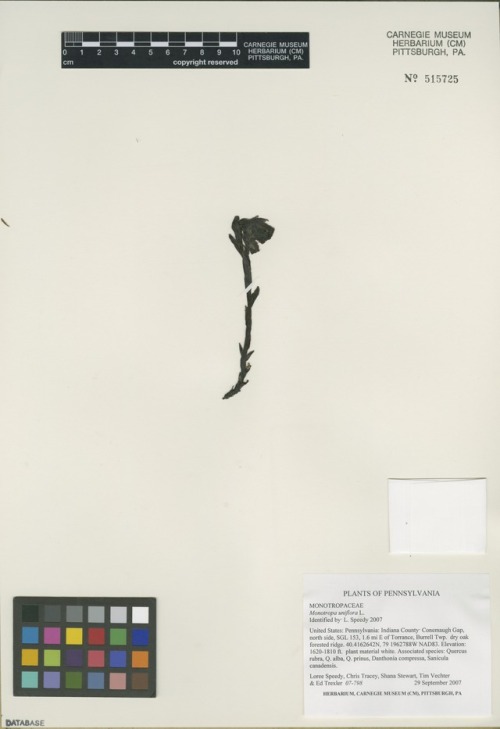
Not all plants in our area photosynthesize! Collected on September 29, 2007, this specimen was collected by Loree Speedy in dry woods in Burrell Township, Indiana County, PA (near Blairsville). Often mistaken for a fungus, Monotropa uniflora, commonly known as the ghost plant, is indeed a flowering plant in the blueberry family.
When alive, the plant is white (hence the name ghost plant), but turns black when dried. It lacks the green chlorophyll pigments of most plants, and therefore does not make its own sugars through photosynthesis. Instead, Monotropa uniflora is a heterotroph.
Like humans, heterotrophs ingest or absorb carbon necessary for life from organic sources, rather than fixing carbon from atmospheric carbon dioxide through photosynthesis). More specifically, this plant is a myco-heterotroph.
The way this plant gets its food is incredible. It parasitizes mycorrhizal fungi in the soil. And where does the mycorrhizal fungi get its food? These fungi form a close relationship (symbiosis) with many forest trees, shrubs and herbs, where the fungi aid the host plant in water and nutrient uptake and the fungi receive sugars from the plant in return. This complex relationship was shown using radioactive carbon dioxide, tracking tagged carbon molecules from a host tree to Monotropa uniflora.
So…ultimately, the food for this non-photosynthetic plant comes from other plants in the forest!
Botanists at Carnegie Museum of Natural History share pieces of the herbarium’s historical hidden collection on the dates they were discovered or collected. Check back for more!
